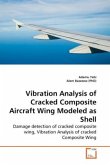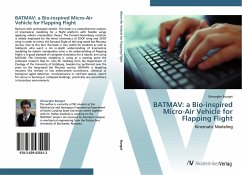A computational aeroelastic analysis of a micro air
vehicle (MAV) is conducted. This MAV has a 24 inch
wing span, and is designed for local area
reconnaissance. Wind tunnel data for the MAV with a
rigid carbon ber wing and a exible carbon ber
ribbed nylon wing are compared to CFD results
incorporating static and dynamic deformations. We use
laser vibrometry to determine the mode shapes of the exible wing. From these shapes, CFD grid
deformations are calculated as part of a
closely-coupled aeroelastic solution method. The
accuracy of MAV performance predictions using CFD
with and without aeroelastic modeling is evaluated
against previous wind-tunnel experiments. The
performance bene ts of the exible wing, and the
applicability and limitations of the model are
evaluated in the present research e ort. Some
suggestions are made as to improvements that can be
made to increase the range of applicability and the
accuracy of the model.
vehicle (MAV) is conducted. This MAV has a 24 inch
wing span, and is designed for local area
reconnaissance. Wind tunnel data for the MAV with a
rigid carbon ber wing and a exible carbon ber
ribbed nylon wing are compared to CFD results
incorporating static and dynamic deformations. We use
laser vibrometry to determine the mode shapes of the exible wing. From these shapes, CFD grid
deformations are calculated as part of a
closely-coupled aeroelastic solution method. The
accuracy of MAV performance predictions using CFD
with and without aeroelastic modeling is evaluated
against previous wind-tunnel experiments. The
performance bene ts of the exible wing, and the
applicability and limitations of the model are
evaluated in the present research e ort. Some
suggestions are made as to improvements that can be
made to increase the range of applicability and the
accuracy of the model.








